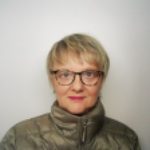Link to Pubmed [PMID] – 9169874
Nature 1997 May;387(6632 Suppl):98-102
Chromosome XV was one of the last two chromosomes of Saccharomyces cerevisiae to be discovered. It is the third-largest yeast chromosome after chromosomes XII and IV, and is very similar in size to chromosome VII. It alone represents 9% of the yeast genome (8% if ribosomal DNA is included). When systematic sequencing of chromosome XV was started, 93 genes or markers were identified, and most of them were mapped. However, very little else was known about chromosome XV which, in contrast to shorter chromosomes, had not been the object of comprehensive genetic or molecular analysis. It was therefore decided to start sequencing chromosome XV only in the third phase of the European Yeast Genome Sequencing Programme, after experience was gained on chromosomes III, XI and II. The sequence of chromosome XV has been determined from a set of partly overlapping cosmid clones derived from a unique yeast strain, and physically mapped at 3.3-kilobase resolution before sequencing. As well as numerous new open reading frames (ORFs) and genes encoding tRNA or small RNA molecules, the sequence of 1,091,283 base pairs confirms the high proportion of orphan genes and reveals a number of ancestral and successive duplications with other yeast chromosomes.

